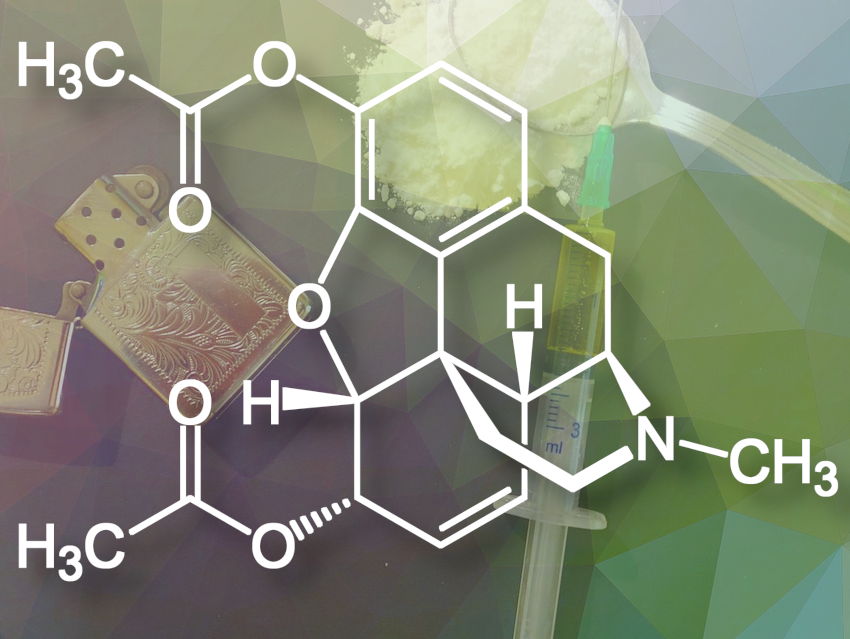In August 1897, two substances that are now world-famous were synthesized in the laboratory of a dye factory. One spread quickly and is still one of the world’s deadliest drugs, while the other had a slower start but is still one of the world’s most widely used and popular drugs. We are talking about heroin and aspirin, respectively. How did this come about?
1 Chemical Industry and Pharmacies
Although chemicals have always been produced and used, their production started to boom at the beginning of the Industrial Revolution. By the end of the 19th century, both the quantity and variety of chemicals produced exploded. Large chemical industries developed in Germany and later in the United States.
The dye industry, based on coal tar, a by-product of steel production, was established in the late 19th century, so that dyes were produced on an industrial scale for the first time. August Wilhelm von Hofmann (1888–1892) discovered that the starting product is aniline [1]. In 1863, the company Bayer was founded in Barmen (now a district of Wuppertal), Germany, as “Friedrich Bayer et comp.” by the dyestuff merchant Friedrich Bayer (1825–1880) and the dyer Friedrich Weskott (1821–1876). In 1865, BASF was founded in Ludwigshafen, Germany, as “Badische Anilin- und Sodafabrik” by the entrepreneur Friedrich Engelhorn (1821–1902).
Other chemical companies were founded out of pharmacies. The purchase of a pharmacy in Darmstadt by Friedrich Jacob Merck in 1668 laid the foundation for the two companies Merck KGaA in Germany and Merck & Co in the United States. In 1851, Ernst Schering bought his “Green Pharmacy”, which later became the Schering pharmaceutical company, part of Bayer AG.
In addition to dyes, the companies also started to produce medicines. This marked the beginning of the industrial production of ready-to-use specialty pharmaceuticals that we take for granted today. Prior to this, pharmacies only produced individual items.
In 1883, twenty years after Bayer was founded, the chemist Carl Duisburg (1861–1935) came to the company; it was then called “Farbenfabriken vorm. Friedr. Bayer & Co”. Carl Duisburg was responsible not only for the production of pharmaceuticals, but also for the establishment of a large scientific research laboratory. Bayer’s first drug, Phenacetin, came on the market in 1887 [2]. By 1902, the department had brought 48 medicines to market.
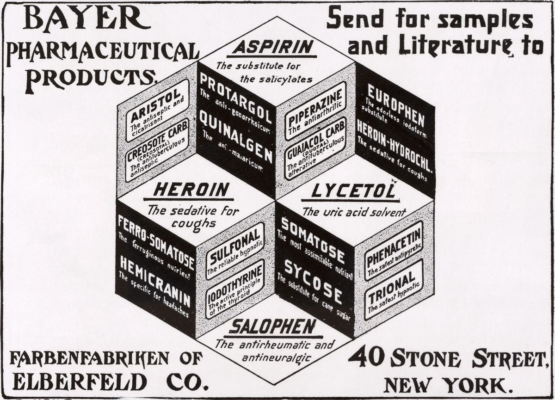
Figure 1. Some of Bayer’s early pharmaceutical products (public domain).
2 Opium
Opium, a narcotic derived from the latex of the opium poppy (see Fig. 2), consists of several alkaloids.
Raw opium was known to the ancient Egyptians and Sumerians as early as the 4th millennium BC. By 1500 A.D., it was part of Chinese medicine, but smoking opium in China in the mid-17th century led to addiction and government intervention, resulting in the Opium Wars of the 19th century.
The most important alkaloid of opium is morphine. In 1804, the German pharmacist Friedrich Wilhelm Adam Sertürner (1783–1841) succeeded in isolating morphine from opium. The correct molecular formula was not determined until 1848 by Auguste Laurent (1807–1853). Sertürner first called the alkaline substance, which had a narcotic effect in animal experiments, morphium; later the more common term morphine was used, both derived from Morpheus, the name of the Greek god of dreams.
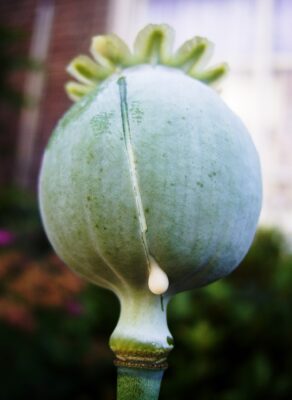
Figure 2. Seed head of the opium poppy Papaver somniferum (Public domain).
In 1827, morphine was commercially produced as a painkiller by the Merck company. It was found that it had both analgesic and euphoric effects, and that it led to morphine addiction. From 1875 on, morphine addiction was discussed in the medical community. At that time, addiction was of therapeutic origin, caused by doctors or pharmacists who carelessly gave morphine to their patients.
The other alkaloids in opium have gradually been isolated. One example is codeine, or 3-methylmorphine, which was first isolated in 1832 in France by Pierre Robiquet (1780–1840). It was hoped that a drug could be found that would be as effective as morphine, but with less potential for addiction.
In the 1880s/90s, the new chemical-pharmaceutical industry worked on this. It was also discovered that many alkaloids, not just narcotics, could be made less toxic by combining them with acetic anhydride, so via acetylation.
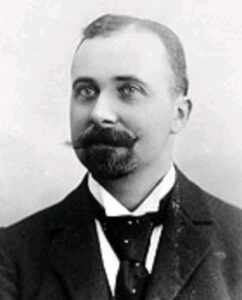
Figure 3. Felix Hoffmann (1868–1946). (Public domain)
2 Heroin
2.1 The Discovery of Heroin
Felix Hoffmann (1868–1946; see Fig. 3), who joined Bayer in 1894 as a laboratory chemist, was tasked with acetylating various substances to make them less toxic. On August 10, 1897, he succeeded in producing acetylsalicylic acid (later named aspirin) (see Fig. 4). Salicylic acid was acetylated because in its original form, it was harmful to the stomach lining. Eleven days later, on August 21, 1897, he produced diacetylmorphine (later named heroin) (see Fig. 5).

Figure 4. Acetylation of salicylic acid.

Figure 5. Acetylation of morphine
His colleague Heinrich Dreser (1860–1924) was responsible for testing the substances, first on animals and, if that worked, on humans. He was particularly excited about heroin because it offered Bayer a chance to enter the alkaloid business, which had been dominated by Merck.
Heinrich Dreser discovered that diacetylmorphine suppressed coughing. Therefore, it was originally designed and sold as a respiratory depressant. In fact, it was initially thought that heroin had all the benefits of morphine but hardly any side effects. The only things that were noted were sexual listlessness and constipation. This seems strange, of course, since heroin is now known to be one of the most addictive substances known. How did this happen?
2.1 The Effects of Heroin
According to a study by Heinrich Dreser, taking heroin deepens and slows breathing, making each breath more effective. But this was a serious error. In fact, the rate of breathing is reduced, but the volume of the breath is not increased. This is the case with all morphine derivatives and leads to respiratory arrest at high doses, which is why heroin addicts die of overdoses. Had this been known at that time, heroin would not have been marketed as a cough medicine.
In 1898, Bayer sold heroin in small bottles in powder form (see Fig. 6). Heroin became controversial very quickly after its introduction, for example, one doctor wrote an article in 1899 entitled “On the Dangerousness of Heroin”. However, these opinions were in the minority, and the prescribing of heroin rapidly grew popular. After all, there were 14 indicators for heroin use, such as mental illness, sleep disorders, high blood pressure, heart disease, and pain, and many were enthusiastic about the fact that heroin, unlike morphine, did not cause addiction. This misconception probably stemmed from the fact that morphine and heroin were used differently.
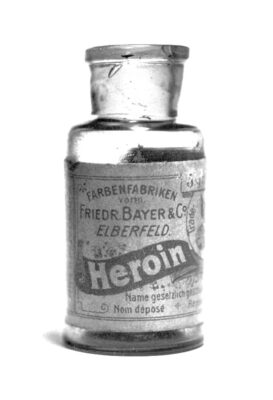
Figure 6. Bayer heroin bottle, originally containing 5 g of heroin. It probably dates from the 1920s. (Public domain)
In 1841, the Frenchman Charles-Gabriel Pravaz (1791–1853) discovered the first plunger syringe that could be used to administer liquid drugs; it became widely used from about 1853 onwards. At the time, high doses of morphine were usually injected intravenously. Heroin, on the other hand, was initially administered in small doses as a powder to be taken orally. There were also juices and pills. Heroin works faster and more intensely, and it works in smaller doses because it is more fat soluble than other morphine substances. Otherwise, it does not differ from morphine in its effects.
It is also assumed that the popularity of heroin grew because many doctors believed in this universal miracle drug—they were enthusiastic about the idea of having a drug that worked for practically everything and had no side effects. It must also be said that there were hardly any synthetic medicines available at that time, there were not so many pills as we know it today. This makes the enthusiasm that surfaced when doctors were faced with the idea of a miracle drug even more understandable.
Why the name heroin was chosen is not clearly documented, but one can guess. It refers to the Greek word for hero (heros, ήρως) and has the ending “-in”, which is often used for drugs. The name was registered on June 17, 1898 at the Imperial Patent Office in Berlin. The substance itself could not be registered because it had already been synthesized for the first time in 1847 by the British chemist Charles Romley Alder Wright (1844–1894) [3]. It was not pursued further, mostly on the assumption that its effects are not so different from morphine. As there was no patent on the substance, soon other companies like Sandoz, Hoffmann-La Roche, Boeringer, or Merck produced it, too. It was sold in pharmacies.
Heroin quickly became a huge success: In its first year, Bayer produced 45 kg, and by 1913, the company produced 970 kg. This made them the world leader. After that, however, production and sales dropped massively, and in 1940, they finally stopped production completely. How did this happen, and why did they not know earlier that heroin is addictive? Or did they know?
3 From Medicine to Recreational Drug
Until World War I, the United States was the largest consumer of heroin. In 1909, the USA passed the first smoking opium exclusion act, which prohibited the import of opium into the USA. 10 % of all doctors were considered to be addicted to opium, several hundred thousand people were injecting themselves with morphine, and many immigrants from China were addicted to smoked opium. After the act came into force, opium was expensive and only available on the black market, as was cocaine. Smoked opium and cocaine had been the drugs of choice in the USA. Heroin now became the alternative drug. It was very cheap and was produced by many pharmaceutical companies. It is easy to transport and has a low weight and volume in relation to its value.
Heroin was now mainly smoked or injected, which produced an euphoric effect and worked much faster than if it was absorbed through the digestive tract. Previously, only a few milligrams—less than a tenth of what was injected—were ingested. When taken orally, it was also slow to reach the brain. Users did not experience a high. In 1920, the term “heroinism” was completely unknown to German medical authorities. This changed when the drug was snorted, smoked, or injected intravenously in high doses.
As clinics filled with heroin addicts, the drug became better controlled and harder to prescribe. This caused the heroin trade to shift to the black market. Prices rose and drug-related crime increased. By the end of the 1920s, the world’s legal demand for heroin was two tons, but up to nine tons were being produced each year. Some companies supplied drugs to smuggling organizations.
The pharmaceutical industry produced less and less heroin as it was increasingly banned, but illegal laboratories were producing more and more. Heroin was no longer available in pharmacies. In 1955, the United Nations considered banning its production. However, by that time, legal production had already declined so much that there was only an appeal made.
4 A Recreational Drug or a Medicine?
4.1 Misjudgments
Many of today’s recreational drugs originated as medicines during this period, before their addictive properties were known: Cocaine was isolated from the leaves of the coca plant by Albert Niemann in 1860 and produced commercially by Merck in the 1880s. Lysergic acid diethylamide (LSD from the German LysergSäureDiethylamid; see Fig. 7) was synthesized by Albert Hofmann (1906–2008) at Sandoz in 1938 as a potential cardiovascular and respiratory stimulant and tested in self-experiments [4]. It was used in experiments by psychiatrists from the 1940s to the 1960s. Its subsequent recreational use led to its prohibition in the Western world in the 1960s.
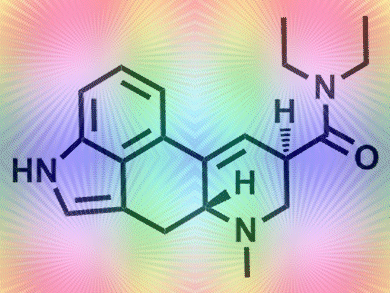
Figure 7. Lysergic acid diethylamide (LSD).
There have also been serious misjudgments about the effects of other products. A well-known example is DDT (dichloro-diphenyl-trichloroethane). It was developed as the first modern synthetic insecticide in the 1940s, and later became infamous for its environmental impacts [5].
4.2 Still Useful?
Synthetic opiates include the most effective painkillers. Because the indispensable opiates are now treated too restrictively in the opinion of some, the seriously ill and dying often have to endure pain that these substances could easily take away. In some countries, heroin is again being allowed as a painkiller under strict controls. Policy makers argue that many addicts may look like zombies because of toxins and bacteria in street heroin and infections from unsterile needles, not heroin itself. In some other countries, the possession of heroin carries severe penalties, including long prison sentences, flogging, and even execution.
Perhaps the words of Paracelsus apply here: “The dose makes the poison.”
References
[1] Vera Koester, History of Synthetic Dyes, ChemistryViews 2023. https://doi.org/10.1002/chemv.202300069
[2] Erik Verg, Gottfried Plumpe, Heinz Schultheis, Milestones, The Bayer Story 1863–1988, Bayer AG, Leverkusen, Germany, August 1988, page 578.
[3] C. R. A. Wright, XLIX.—On the action of organic acids and their anhydrides on the natural alkaloïds, Part I, J. Chem. Soc. 1874, 27, 1031–1043. https://doi.org/10.1039/JS8742701031
[4] 75th Anniversary: Lysergic Acid Diethylamide (LSD), ChemistryViews 2013.
[5] Klaus Roth, Elisabeth Vaupel, Pyrethrum: History of a Bio-Insecticide – Part 3, ChemistryViews 2018. https://doi.org/10.1002/chemv.201800113
Sources
- Michael de Ridder, Heroin vom Arzneimittel zur Droge. Die Geschichte einer pharmazeutischen Spezialität, Campus Verlag, Frankfurt am Main, Germany, 2000. ISBN: 978-3-593-36464-3
- Richard Hemmer, Daniel Meßner, Die Erfindung von Heroin und Aspirin, Geschichten aus der Geschichte GAG444, Podcast März 2024.
Also of Interest
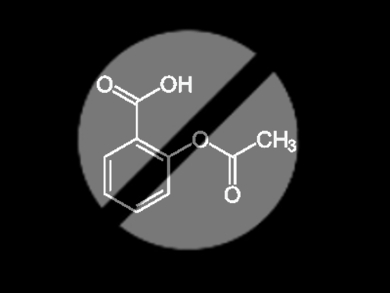
Why is Aspirin so exciting?

A look behind the scenes at two cases that illustrate the different approaches used in forensic toxicology
